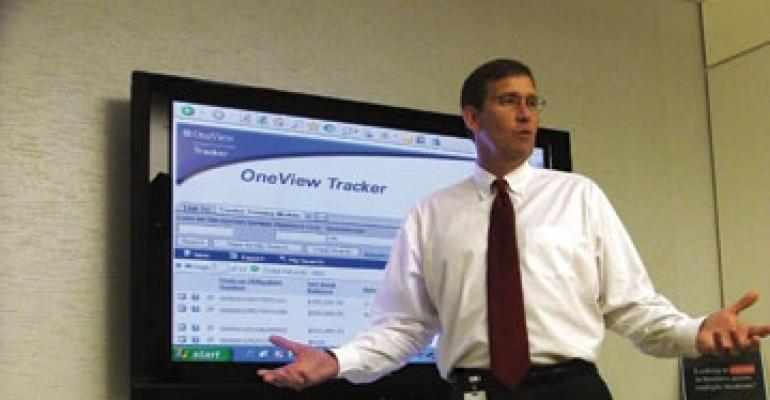
As banks struggle to cope with a flood of commercial real estate loan workouts and defaults, some have called for help in tracking the loans and creating audit trails for regulators and auditors.
Loan servicing software has been used for years by private lenders and government agencies, but now big banks’ need to track assets while seeking new sources of revenue has created a more acute demand for highly specialized loan tracking and database technology.
Jones Lang LaSalle, the real estate brokerage and services firm based in Chicago, has just debuted a proprietary loan tracking database called OneViewSM for banks and public institutions as part of its value recovery services program, initiated last November.
“In working with banks, one of the things we found is that their systems weren’t set up to deal with their current issues and the strategy that’s necessary to deal with assets as they are flowing through the banks now,” says John Vick, managing director of Jones Lang LaSalle’s development and asset strategy team.
“We’ve been working for a Midwest bank for a year and a half now. They basically realized early in the downturn that they needed help and they didn’t have a large REO [Real Estate Owned] department and they needed assistance.”
What the program offers is not software, but rather a secure Web link to a real-time, in-depth view of the institution’s portfolio. That includes an overview of the bank’s portfolio contents and financial assets, or the tool can zero in on particular assets and supporting documents.
Banks can’t create an effective financial strategy unless they can determine precisely what assets they have and their current status, says Vick. If an REO property has already been foreclosed on, it can be grouped with other non-performing loans and tracked as it moves through the transition in status.
Designed for banks with a portfolio of at least $100 million, the database draws relevant information from a number of sites and synthesizes it in one place. “It’s really about taking data and pulling it together so you have information that you can make good business decisions from,” says Vick.
Loan technology programs already on the market from other providers vary from those capable of processing database information in various languages and currencies while documenting loan data, to those that perform credit bureau reporting or loan servicing.
Jones Lang LaSalle has more than 1,200 tracker databases in use around the world for different kinds of applications. The new loan tracking service for banks, adapted from programs used for other applications, helps financial institutions to become more transparent in the way they handle loans.
“They need to be able to show to their committees, to their auditors, to their oversight [managers] as they’re disposing of these assets, that they’re being responsible, that they’re getting the best value. And we can create a clear trail on an audit of that process, because we track the activities,” explains Vick.
Not is financial data associated with a loan available, so is a list of names or roles of those who dealt with the loan. If a manager needs to know who bid on a loan sold six months earlier, how it was marketed, and the terms of the loan, that level of archiving is supported by the database, and it allows the viewer to follow the audit trail.
The database is Microsoft-based and can be accessed remotely with a high-speed Internet connection. The Web application is not marketed separately, but is provided in connection with the distressed asset program.

